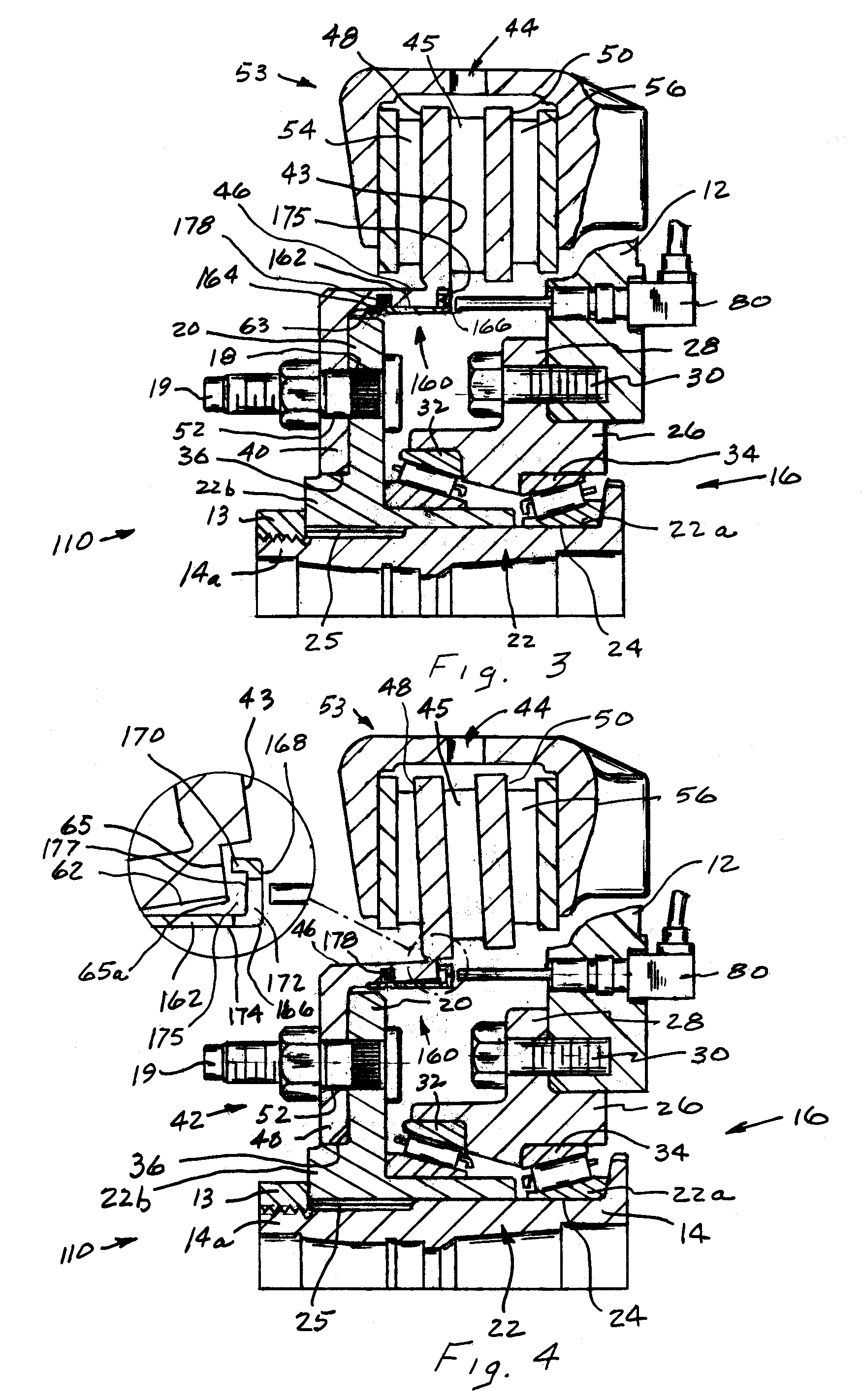Rotor and exciter ring
a technology of exciter ring and rotor, which is applied in the direction of braking disc, braking system, aircraft braking arrangement, etc., can solve the problem of thermal expansion of the rotor
- Summary
- Abstract
- Description
- Claims
- Application Information
AI Technical Summary
Benefits of technology
Problems solved by technology
Method used
Image
Examples
Embodiment Construction
[0018]In the description that follows, components of the disc brake in the various embodiments that are identical may be identified by a same number or the same number plus whenever necessary to better describe a functional relationship with another component.
[0019]The present invention is designed to be incorporated in a corner assembly 10 and may be of a type such as disclosed in U.S. Pat. No. 5,984,422 or 6,718,634, wherein a hub 14 and bearing 16 are retained in a knuckle 12 as illustrated in FIG. 1. The bearing 16 includes an inner race 22 with a flange 20 that has a plurality of openings 18 (only one is shown) for receiving a corresponding plurality of studs 19 through which a rotor 42 and ultimately a rim of a wheel are attached to an axle of the vehicle. The inner race 22 of bearing 16 is located on a mounting surface 24 of the hub 14 and separated from an outer race 26 by a plurality of rollers 32,34 (only two are shown) that are located between the inner race 22 and outer ...
PUM
 Login to View More
Login to View More Abstract
Description
Claims
Application Information
 Login to View More
Login to View More - R&D
- Intellectual Property
- Life Sciences
- Materials
- Tech Scout
- Unparalleled Data Quality
- Higher Quality Content
- 60% Fewer Hallucinations
Browse by: Latest US Patents, China's latest patents, Technical Efficacy Thesaurus, Application Domain, Technology Topic, Popular Technical Reports.
© 2025 PatSnap. All rights reserved.Legal|Privacy policy|Modern Slavery Act Transparency Statement|Sitemap|About US| Contact US: help@patsnap.com



